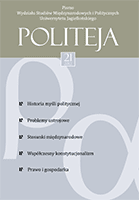Niepotrzebny Art. 122 a w Dyrektywie 2009/111/WE
Article 122a in Capital Requirements Directive II
Author(s): Jolanta ZombirtSubject(s): Law, Constitution, Jurisprudence
Published by: KSIĘGARNIA AKADEMICKA Sp. z o.o.
Summary/Abstract: The aim of the text below is to point out why the Article 122a in Capital Requirements Directive II definitely does not take into consideration special features of securitization, so, there are no chances to meet the goals specified by the European regulator. Stratification is one of the most meaningful features of any securitisations. It involves separation of credit risk into different tranches or classes. Subordination of these tranches shows what amount of credit risk – and a probability of default – is being embedded in any of them. Revenues paid in by so called underlying borrowers are directed to the investors commencing with the most senior tranche, located on the top of any structure. If any predicted cash flow suffers from any losses in revenues than there are investors in the most subordinated (junior) tranche who are affected first. According to the long standing practice in the financial sector this junior tranche is predominantly accepted by originators of underlying assets. Notwithstanding, originators – because of the highest regulatory capital charge – prefer to see it very thin. European regulator has inserted this practice as mandatory into the second version of the Capital Requirements Directive, defining it as 5 per cent of the value of whole issuance (of the notional sum of all tranches). This requirement will, however, change nothing in originators’ approach to credit risk of created assets.
Journal: Politeja - Pismo Wydziału Studiów Międzynarodowych i Politycznych Uniwersytetu Jagiellońskiego
- Issue Year: IX/2012
- Issue No: 21
- Page Range: 435-466
- Page Count: 32
- Language: Polish

